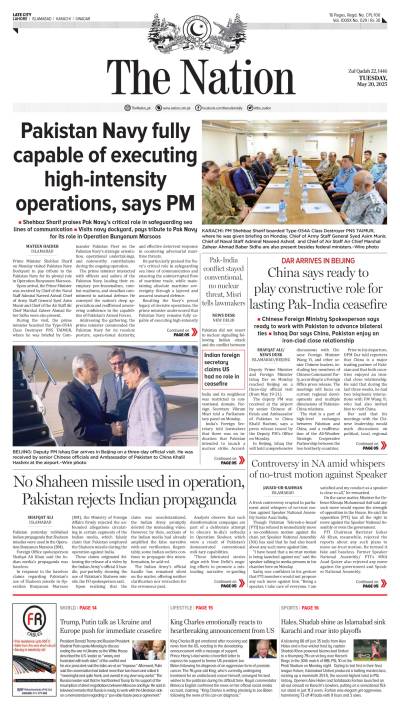A few weeks ago, my better half hung a framed quote on the kitchen door as proof of her title. The quote unequivocally declared, “I am Queen of the Kitchen. If you don’t agree with me – starve”. Having confirmed her sovereignty in my humble home (something that was never in doubt), she demanded my total and unconditional surrender with regards to a debate set in motion, when I voiced the ‘mind over matter’ theory with regards to the ongoing heat wave. It was a matter of time before I capitulated.I had, till my surrender, remained consistently loyal to the notion that mankind in general was becoming soft and that severity of elements i.e. heat and cold as felt by us was a manifestation of this weakness.
In other words, it was our state of mind combined with lack of physical endurance that was causing all the commotion about summer heat. This did not, by a long shot, imply that hot weather was without its toll, it simply meant that we had begun to feel exaggerated discomfort (hence the modern weatherman’s term of ‘real feel’) in spite of the fact that people of my generation and earlier went through the same type of weather and coped with it at a time, when there were no air conditioners or refrigerators.
The densely packed multilevel houses lining narrow claustrophobic streets in the old walled city of Lahore were ideally suited to generate the oven effect, especially before electric fans found their way inside homes.
An effective solution was therefore found to counter direct and reflected heat by designing thick walls, high roofs and ‘bhoras’ or basements. An air circulation system was also put in place by putting in ‘roshandans’ or skylights that could be opened or shut by pulling or releasing sturdy string. These ventilators were located about twenty feet high near the ceiling and since hot air was expected to rise, provided an escape route creating a circulation pattern or air current.
The basement by its very location and properties was a cool refuge and afternoon sleeping quarters for the family, while nights were spent on intermediate rooftops and ‘mamtees’. Come monsoon time with its attendant humidity and the family took to sleeping in a specially designed structure called ‘barsati’. This room was generally on the intermediate rooftop and had windows that opened on at least two sides to provide cross ventilation.
Food and beverages supplemented architecture in a very effective manner. The summer menu was selected after careful consideration of its therapeutic value with ‘satoo sweetened with jaggery sugar’ and ‘sandal’ extract topping the list of drinks.‘Khas ki Tatties’ or curtains made from a particular variety of grass that became aromatic when wet, were hung in front of windows and doors. As hot air passed through this screen it cooled and lowered room temperatures, while acting as an air freshener.
Drinking water was generally stored in terracotta pitchers that provided a cooling effect through continuous and slow evaporation. Ice was available for a price and was used whenever guests came a calling or ‘something or the other’ was being celebrated in the family. The more privileged of citizens, who lived in the cantonment or the civil lines had the advantage of open spaces and vegetation, but even they faced the hot weather stolidly, employing some of the remedies adopted by the old city dwellers.
There were heat related casualties even then, but they passed unnoticed because there was no television or breaking news. The greatest difference between then and now was the fact that the modern world is equipped with technology that can mitigate effects of heat – a key element of good governance in parts of the globe, where summers exact a toll. The most critical amongst these include uninterrupted availability of affordable electric power, clean drinking water and hospitals to treat victims of heat stroke. With these facilities at hand, perhaps the word ‘real feel’ will gradually fade into extinction. The question is, when this will happen in Pakistan. The writer is a historian.






